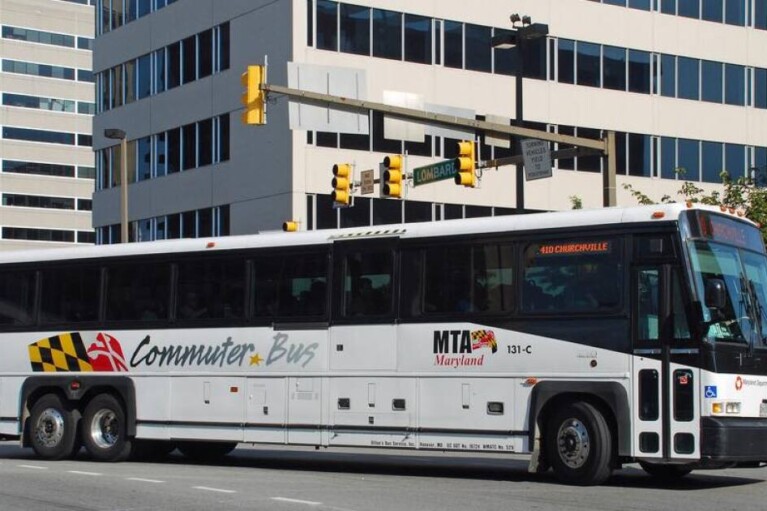Guest Commentary: Let’s Stop Greenwashing Md.’s Renewable Energy
By Tim Whitehouse and Gina Angiola
The six candidates for governor who vowed to support the Clean Energy Jobs Act if elected in November may be surprised when they find out what is in CEJA.
Supporters of the Clean Energy Jobs Act claim it will expand renewable energy in Maryland to 50 percent by 2030 while unleashing a new wave of clean energy jobs in Maryland. A closer look at the act reveals these claims to be overstated.
The act only requires that about 20 to 25 percent of Maryland’s electricity come from in-state wind and solar. The rest would come in the form of “unbundled” renewable energy credits, which are “paper credits” representing one megawatt-hour of electricity, largely bought from out-of-state companies and paid for by Maryland ratepayers in utility bills.

Tim Whitehouse
Paper credits are an accounting trick that do not help Maryland transition to a clean energy future. They are designed to give Maryland the aura of using green energy, while transferring a massive amount of wealth from Maryland residents to out-of-state energy companies and ratepayers.
These credits allow an out-of-state energy producer to sell its electricity to an out-of-state utility and then sell paper credits to a Maryland utility. For example, under Maryland’s current Renewable Portfolio Standard and the Clean Energy Jobs Act, a company producing energy from landfill gas in Oberlin, Ohio, could sell its electricity to a local utility in Ohio. The Ohio utility could then sell the electricity to local customers and the paper credits to a Maryland utility. The Maryland utility would then use the paper credits to count toward Maryland’s RPS requirements and would pass the costs for these credits on to Maryland ratepayers.
Maryland ratepayers pay tens of millions of dollars per year for these unbundled renewable energy credits without any guarantee that any additional clean energy is being added to our grid, or any grid, for that matter.
To meet Renewable Portfolio Standard requirements, utilities are buying credits from companies producing energy from biomass, incineration, small hydropower, wind and black liquor (a waste product used for energy in pulp mills). Between 2008 and 2016, ratepayers sent about $250 million out of state for unbundled renewable energy credits, money that could have been spent developing new clean energy in Maryland.
Maryland’s purchase of these energy credits associated with small-scale hydropower illustrates how these credits lead to greenwashing, a term we do not use lightly.
Between 2007 and 2016, the amount of “electricity” from small-scale hydroplants in Maryland’s Renewable Portfolio Standard increased over 2,500 percent. However, during this time, capacity and generation from small hydropower facilities remained relatively steady both regionally and nationally. Hydropower energy production did not increase. What increased was the amount of paper credits Maryland ratepayers were buying from out-of-state hydro sources.
Hydropower is not the only example. Maryland ratepayers spent $77 million to purchase black liquor, biomass and incineration credits from Virginia; $7.3 million each for black liquor credits from Tennessee and North Carolina; over $62 million for wind credits from Illinois, Ohio, Indiana, North Dakota, Iowa and Missouri; and $3.3 million for landfill gas paper credits from Illinois and Kentucky.
Increasing the Renewable Portfolio Standard to 50 percent without stopping the use of these paper credits will cost Maryland ratepayers dearly. By 2030, 18 million credits could be unbundled, compared to 7.2 million credits in 2016. With current prices in Maryland for non-solar renewable energy credits at about $12, the costs to Maryland ratepayers will be significant.
Maryland’s RPS was designed as a mechanism to increase renewable electricity production in our state to help us transition away from fossil fuels. Yet only about 5 percent of Maryland electricity currently comes from wind and solar, despite more than a decade of experience with the current RPS. The money being spent on unbundled RECs is not accomplishing the stated policy goals.
Back to the Oberlin example. The Oberlin utility that sold the paper credits to Maryland used those profits to give rebates to their customers. Oberlin residents got the economic benefits from the development of the landfill gas project, the energy from the project, reduced air pollution and lower energy rates.
What did Maryland ratepayers get out of this transaction? Higher bills and a certificate they could apply to their Renewable Portfolio Standard.
That is bad fiscal and climate policy.
Tim Whitehouse is the executive director of the Chesapeake Physicians for Social Responsibility and Gina Angiola is on the group’s board.




 Creative Commons Attribution
Creative Commons Attribution